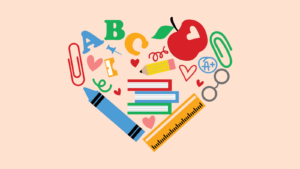Finding the comfort zone
How do you sleep?
My position of choice starts with the following steps:
1. Stack two pillows just right.
2. Lie on my right side, once I find the perfect spot in the mattress, just like I have done for the past 6 years.
3. Tuck one end of the body pillow between my knees because I can’t stand to have my legs touching when I sleep;
4. Hog all of the covers so my husband barely gets any but keep my feet sticking out of the covers because I hate it when my feet get hot.
5. With my left arm, hug the other end of the body pillow like my life depends on it. 6. Wiggle my right arm in between the two pillows under my head so my elbow still sticks out just a little bit.
My sleep position never fails. I can fall asleep so easily once I find that sweet spot, given that both of my kids are sleeping in their own beds. If I had to fall asleep lying on my back, I probably could, eventually my body would get tired enough and give into the sandman. However, I would probably wake up a little uncomfortable and not as well rested.
We all have a “comfortable position” when we learn. I learn best when I can do things hands on. If I had to learn by listening to a lecture, I could… it might take me longer or I might not get as deep an understanding. However, if there is movement, or a hands-on experience, you can ensure that I have a better understanding.
Now put yourself in the shoes of your students. Not one of them is identical. Not one of them learns the same way. Every student has his or her own needs. Some may be average or above average learners, some may have special needs, some may be language learners, or some just may struggle in different areas. Teachers are faced with the immense task of making sure every student in their classroom is successful. They do not get to pick their students and do not have the luxury of teaching in a “one size fits all” sort of way.
That being said, teachers who are truly passionate about making sure each student is successful need to differentiate their instruction and cater to the many types of learning styles. Teachers need to find each students’ “comfortable position”.
Here are 5 tips to help all learners to be successful:
Cater to different learning modalities
According to Powell and Kusuma-Powell (2011), visual learners tend to make up the majority of our audiences. Pictures are great! I find myself drawing and creating anchor charts like crazy just to be able to create a visual representation for my audience. By providing visual, spatial, kinesthetic and tactile opportunities, teachers allow more students to gain access to the curriculum.
Model model model!
Modeling ties in the power of using visual, auditory and kinesthetic learning. Not only can teachers show students what to do with a visual, but they are also explaining verbally, and using some sort of movement. “PowerUP What Works” has modeling resources as well as videos to help teachers: http://powerupwhatworks.org/strategy-guide/modeling.
Integrate technology
Let’s face it. Technology integration is sweeping the nation. Even the National Association of Elementary School Principals (NAESP) (2016) recommends that teachers integrate technology throughout the school day in order to increase engagement and understanding. Henrico County Public Schools in Virgina has taken the lead on technology integration and its website has proven to be a valuable resource: http://blogs.henrico.k12.va.us/21/.
Differentiate assignments
This can include allowing for various types of responses to questions (pictures, labeling, dictated/scribed, shortened responses, answers in a native language). Teachers can also make modifications or accommodations to assignments. Understood.org has a resource that lays out the differences between modifications and accommodations. According to the website (2016), modifications involve making changes to an assignment, whereas accommodations allow students to complete a grade level assignment.
Modifications
Shortening the assignment
Adjusting the level of the assignment
Giving an alternate assignment
Accommodations
Color coding
Providing word banks or sentence starters
Allowing for cooperative learning
Providing extended time
Allowing alternate seating
Giving frequent breaks
Utilize the resources at your fingertips
So many resources exist to help teachers! A few of these include: the internet, library, teachers of other grade levels (up and down – don’t forget to challenge those who need it!), EFL teachers, resource teachers, speech/language pathologists, community organizations and other professionals within the district.
What other ways have you been able to help all learners learn within their comfort zone?
References
Henrico 21. (n.d.). Retrieved November 03, 2016, from http://blogs.henrico.k12.va.us/21/
Modeling. (2016). Modeling | Power Up What Works. Retrieved November 03, 2016, from http://powerupwhatworks.org/strategy-guide/modeling
Powell, W., & Kusuma-Powell, O. (2011). How to teach now: Five keys to personalized learning in the global classroom. Alexandria, VA: ASCD.
Strom, E. (2013). The Difference Between Accommodations and Modifications. Retrieved November 03, 2016, from https://www.understood.org/en/learning-attention-issues/treatments-approaches/educational-strategies/the-difference-between-accommodations-and-modifications
Technology Integration for the New 21st Century Learner. (2012). National Association of Elementary School Principals: Serving all elementary and middle-level principals. Retrieved November 03, 2016, from http://www.naesp.org/principal-januaryfebruary-2012-technology/technology-integration-new-21st-century-learner




